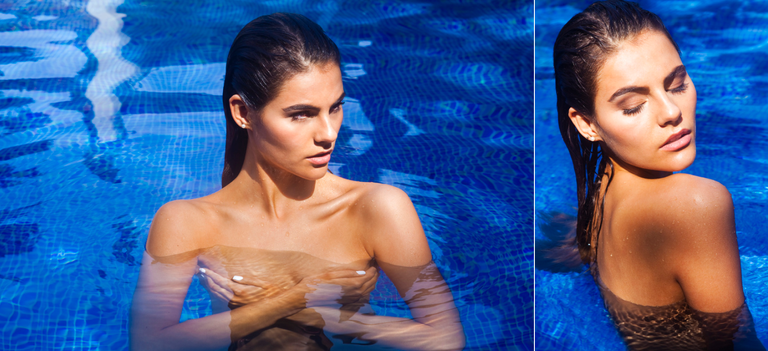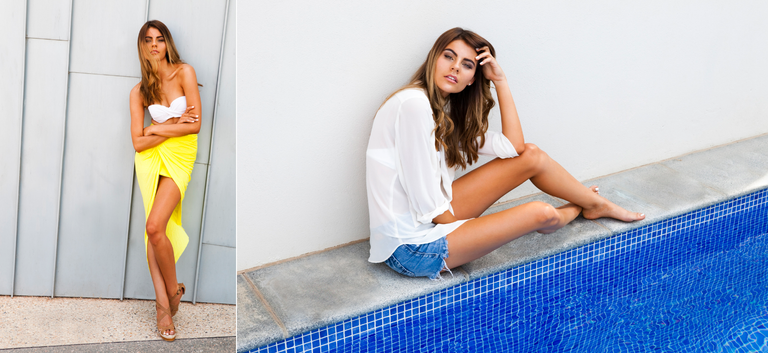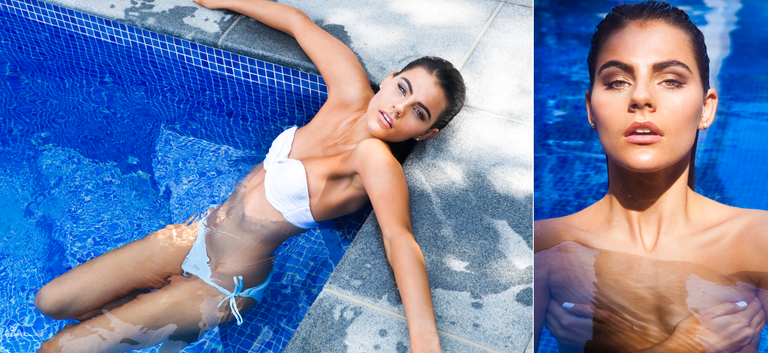|| WHEN THE LIGHT HITS YOUR SUBJECT AT JUST THE RIGHT TIME ||
This photoshoot was for Jessica Peris - who did the hair, makeup, tan and nails.
On this day I had made my way to the model's pool which I had never seen before (normally I pre-scout locations and plan the timing for specific light, although you can never completely control this of course as the lighting is a variable).
While I was shooting, the sun came through the trees at a specific angle - making it look like I lit my subject. It was changing from harsh to semi-harsh, and reflecting off the water creating a beautiful 'glow' on the model's skin.
I LOVE shooting spontaneously and allowing the light to guide me. To this day, this one of my favourite shoots. I'd love to experiment with water again.
Comments and questions welcome :)




Live What You Love
TINA NIKOLOVSKI | PHOTOGRAPHER
W || www.tinanikolovski.com
FB || www.facebook.com/tinanikolovskiphotographer
IG || @tinanikolovski
TINA NIKOLOVSKI | FOUNDER + DIRECTOR
W || www.devojka.com.au
FB || www.facebook.com/devojkamodels
IG || @devojkamodels
Good photos! definitely right about the lighting,
So how long ruffly did it take you to start getting good at taking photos on manual mode?
Hi There
Thank you so much!! :)
To be honest I'm not sure how long in terms of time, maybe a year? It's always ongoing - regardless of which point you are at, you can always study and experiment with light and maximise your images.
My suggestion is take photos in :
Full Sun
Full Shade
Sun at different angles
Sun with a reflector (various sides) and various angles
Get a model and take photos in the sun at point a, and then make your way around them (360 degrees) and take photos of them (make them turn with you) - that way you will really start to understand natural light, and the impact it has on the subject.
The more you do it the more you'll understand it, and you'll start to know how certain light will affect a subject just by looking at it - also, look at the shadows on the floor (how defined they are) as that's an indication of how harsh the sun is too.
Different times of the day also affect your subject of course, so do some shoots in the morning vs midday vs evening :)
That's a massive list but I hope that helps
PS WHOOPS - I misread this (as 'how long did it take you to start getting good at taking photos in natural light)
Here is a more specific answer to your question re manual mode - I studied the theory and started applying it immediately in practical terms, so that I can visually see the changes that the variables make in my images. I'm not sure exactly how long but at least a few months.
VARIABLES:
Shutter
Apeture
ISO
That's mainly it! Shutter applies mainly to how sharp you need your images (and whether you need to 'freeze' the action or capture 'movement' for example a landscape)
Aperture is like the iris - how big the iris is - the higher the number the sharper the depth of field (more is in focus). The smaller the number, the shallower the depth of field (less in focus).
Do some experiments with high vs low aperture
Then high vs low shutter (usually under 60 requires a tripod)
And see what it does to your images :)
Thanks that's intresting/ makes sence, nice explanation! :)
yeah that is a big list that definitely helps tho, I will practice with them settings, I'm guessing iso can be/ is normally left to auto?
You can leave it to auto yes - I like selecting it manually as I always like knowing what my settings are (as they effect the image). The higher the iso the more noise ('grain') - not necessarily a bad thing - but just know how it affects your image :)
Do some with high and low ISO and compare the difference so you understand the visual differentiation :D
Cool cl, thought so, will try that out once I get more experience, thanks!